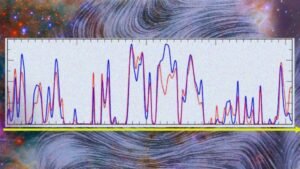The Mystery of Our Hidden Ancestor: How Their DNA Still Lingers in Us

For years, we believed that our history was written in fossils. But DNA has opened a different chapter. A study revealed that millions of people in West Africa carry the traces of an unknown human lineage, extinct for over 600,000 years. It has no face or fossils, but its existence lives on in our genes.
A hidden legacy in the genome

The discovery came from the genetic analysis of modern populations. By studying their genomes, researchers found fragments that did not match any known species sequenced to date. Between 2% and 19% of the DNA seemed to come from a “ghost” population that split from our evolutionary branch long before others.
What’s more puzzling is the lack of archaeological evidence to support it: only statistics and invisible traces that reveal a forgotten interbreeding.
The advantage of inheriting the invisible
Some genetic fragments seem to have played a crucial role. One of the most striking affects the NF1 gene, a tumor suppressor present at high frequencies in various African populations.
This wouldn’t be the first time: in Africa, although the ghost lineage is different, the mechanism could have been similar: brief encounters, but decisive for survival.
Who was this unknown ancestor?
Without fossils or reference DNA, describing it is like trying to reconstruct a face from a shadow. Some scientists suggest it could be Homo heidelbergensis, a common ancestor of Neanderthals and Homo sapiens. Others believe it was an isolated archaic group in the forests of West Africa, evolving in parallel.
Even findings like the Iwo Eleru skull in Nigeria show features that combine modern and archaic traits, possible clues of that lost coexistence.

This adds to an increasingly clear vision: human evolution was not linear or uniform. Africa, far from being a single point of origin, was a mosaic of diverse populations that coexisted, mixed, and disappeared at different times. The metaphor of the family tree falls short: what we see is more like a tangled network of intersecting paths.
The echo of a nameless ancestor
. Their legacy lives hidden in DNA segments that millions of people carry unknowingly. It reminds us that human history is full of chapters we haven’t read and species we can barely grasp.
Perhaps we will never see their bones, but we already know that they are still present in us. And that changes, forever, what it means to be human.





